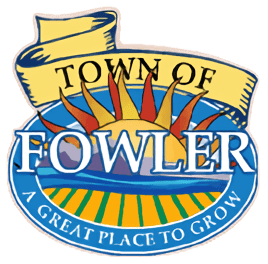The History of Our Home Town and the Surrounding Area
By Fowler Historical Society and Museum
History memorabilia is collected from the files of the Fowler Historical Society and Museum. The Museum is located at 114 Main Street in Fowler, Colorado.
On the southeastern plains of the State of Colorado is the prairie town of Fowler. It is located on the south side of the Arkansas River on U. S. Highway 50 in Otero County, just 34 miles east of old Fort Pueblo.
Who did this land first belong to? The Early People, wanderers and gatherers who hunted wild animals and gathered food; the American Natives, Arapahoe, Commanche, Kiowa, and the Ute Indian Tribes.
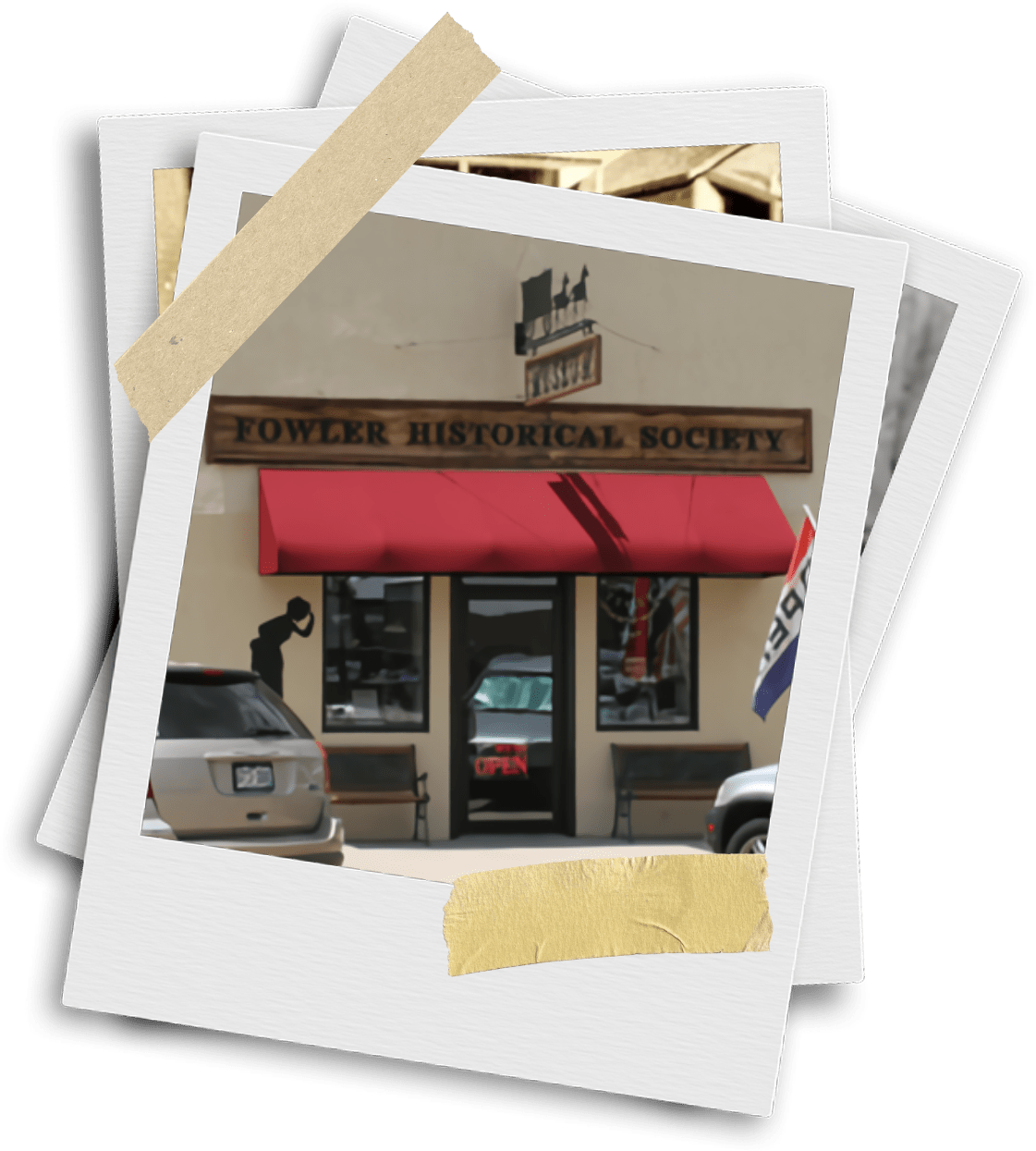

Santa Fe Trail
These early settlers knew the Arkansas River as a turbulent stream; it was deep and swift and could be forded only in a few places in eastern Colorado. Timber for building was floated down the river. For communication, pulleys across the river were used in several locations. The first wagon bridge across the Arkansas River between La Junta and Pueblo was at Nepesta, built in 1886.
A branch of the Santa Fe Trail continued along the north side of the Arkansas River, taking pioneers west to Fort Pueblo.
Jackie Moore's Way Station, just north of Fowler, was a popular stopover for trappers, gold seekers, explorers, and weary travelers.
John Steuben Moore, more familiarly known to people of the Fowler Community at the time as "Uncle Jackie" Moore, was born in Ohio on April 2, 1832. One of eleven children. The family moved a lot; schools were remote, and Jackie received only instruction from his mother. He never learned to write, but his X was readily accepted in transactions or payments. Driving an ox team, he freighted from St. Louis to Colorado (Kansas territory) in 1861. In 1862, he herded cattle for the government in New Mexico and had his share of run-ins with the Indians. During the Civil War, he drove cattle to Fort Union for food for the army. Another Government job was that of hauling wood. Jackie Moore married Elizabeth Clark, a widow with children.
"Uncle Jackie"
Moore was a colorful pioneer, a scout with Kit Carson, and a way station keeper. He was, no doubt, a host to men who met at the cabin to trade stock, buy land, and swap tall tales.
The Arkansas River
Was one of many rivers which influenced a route of travel for wandering Indian tribes and early pioneers. Located on its north bank, just 1000 feet from the Pikes Peak branch of the Santa Fe Trail, was Moore's cabin. It was one of several way stations and was owned and operated by Burrel Smith before he sold it to Moore. Made of cottonwood logs, hewn at the river's edge, the cabin was a five-room structure. There were three rooms in the front and two rooms in the back; the roof was sod, and the floor was wide unplaned boards.
There were several bunkhouses for travelers who stopped to refresh themselves and outbuildings for the horses. A grove of trees gave shade and protection.
Today the cabin can be seen at the Fowler Historical Society, 114 Main Street, Fowler, Colorado.
Travelers heading to the gold fields or to Denver with a stopover at the way station included such well-known figures as:
- General (President) Ulysses S. Grant
- Bent Brothers
- Buffalo Bill
- Kit Carson
- Zebulon Pike
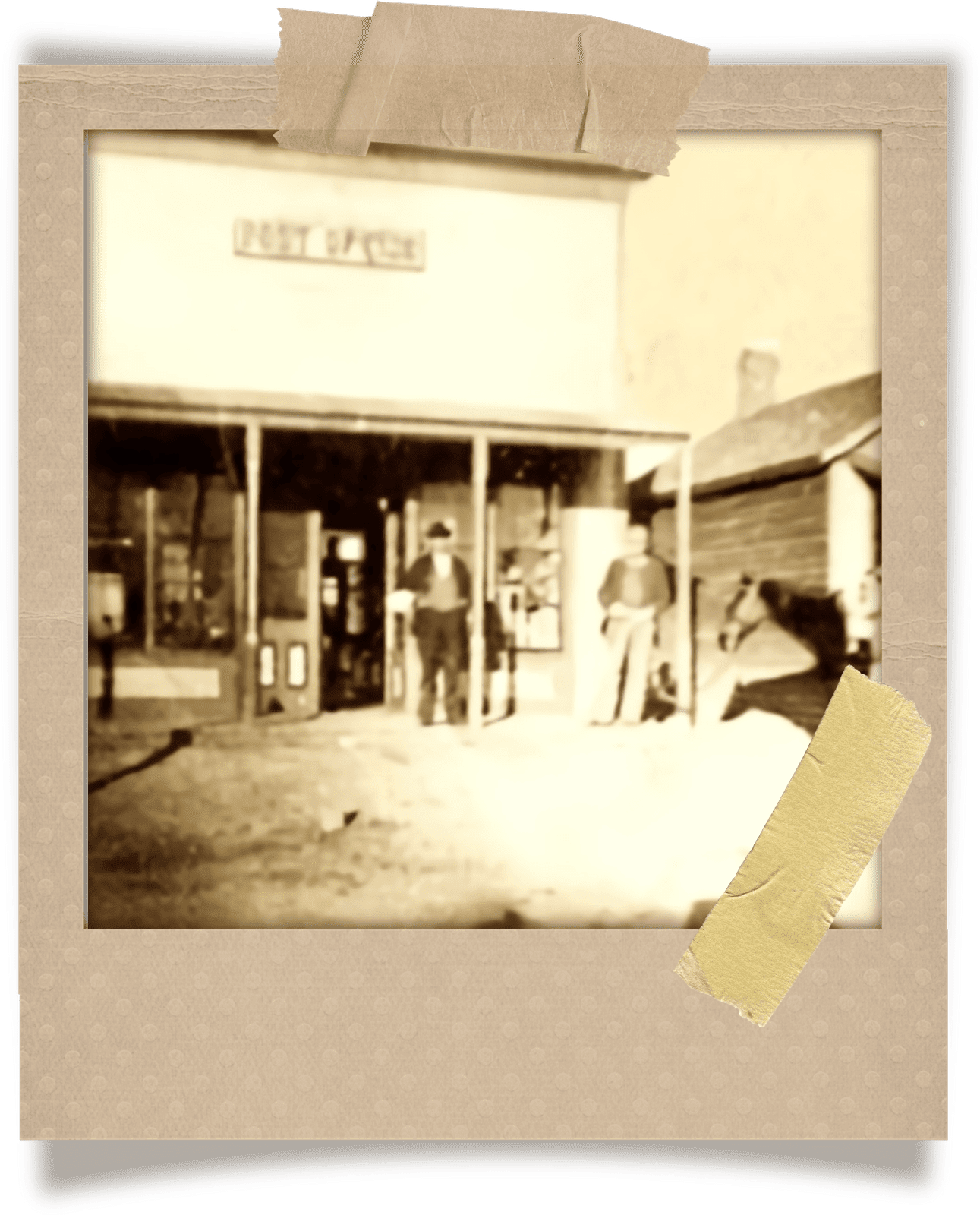
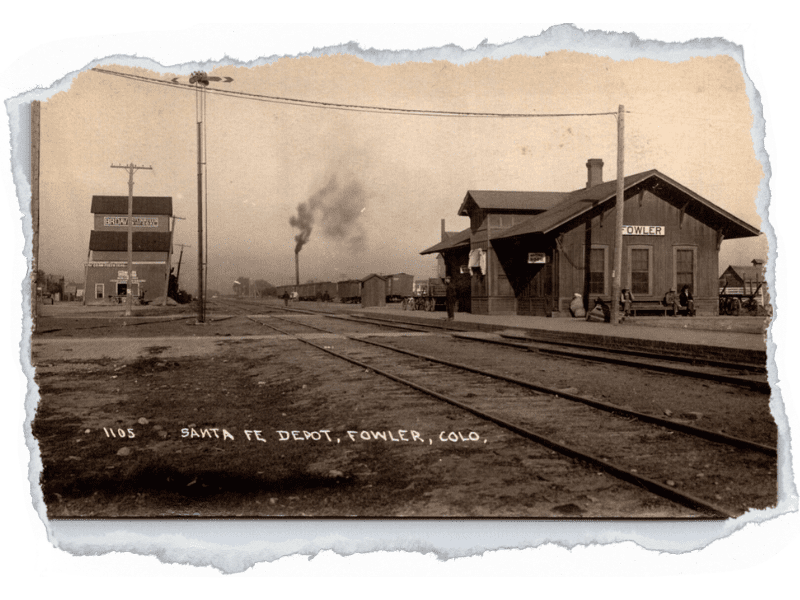
Railroad
In 1876, the Atchison, Topeka and Santa Fe Railroad followed the Arkansas River, extending its line westward to the South Side, a whistle-stop on the railroad line located on the east border of Pueblo County. The name Oxford was given to the South Side whistle-stop just east of Pueblo County in then Bent County.
The railroad workers chose this name because a big bull or ox was killed when crossing the tracks. Oxford was the established U. S. Post Office from April 27, 1882 until September 6, 1890. Because of a conflict with another Oxford on the rail line, the name of the whistle-stop was changed to Sybil. However, the name Sybil was never established as a U. S. Post Office.
The first railroad depot was a box car at Sybil siding. It was there in 1887 that a tall, lanky professor with flowing white hair and a beard stepped off the train. Orson Squire Fowler set foot on what was to become a thriving community named for him: Fowler, Colorado.
O.S. Fowler - Namesake of Fowler
O. S. Fowler, the noted professor and phrenologist, saw great value and potential in the land. He gained control of the land and filed a plat under the name of Fowler Town and Development. His idea was to build an irrigation ditch and import a colony of fruit growers. The improvement of the property had hardly begun, and only one mile of the ditch had been completed when, unfortunately, Professor Fowler became ill and returned to his native state, New York, where he died.
His wife, Abigail Ayers Fowler, continued to manage the company with W. E. Alexander as president. The company had a town platted by W. N. Randall, and sold lots to new residents. All early abstracts have the name Fowler Town and Development Company and Abigail Ayers Fowler as original owners.
O. S. Fowler's idea of a perfect community was a healthy colony. He planned to grow fruit and vegetables and raise pure-fed livestock. The Arkansas River would provide plenty of irrigation water.
A large number of farmers had taken up claims and homesteads along the line of the proposed ditch, and in order to hasten the work, they formed a company and finished the ditch. Originally, it was called the Enterprise, later named 'The Oxford Farmers Ditch' in 1889. The earliest users of water took it from the Arkansas River. After ditches were built, many ran water into cisterns for domestic use. Then, as a precautionary measure against typhoid, wells were dug. Two wells in the town were equipped with hand pumps and troughs for watering horses.
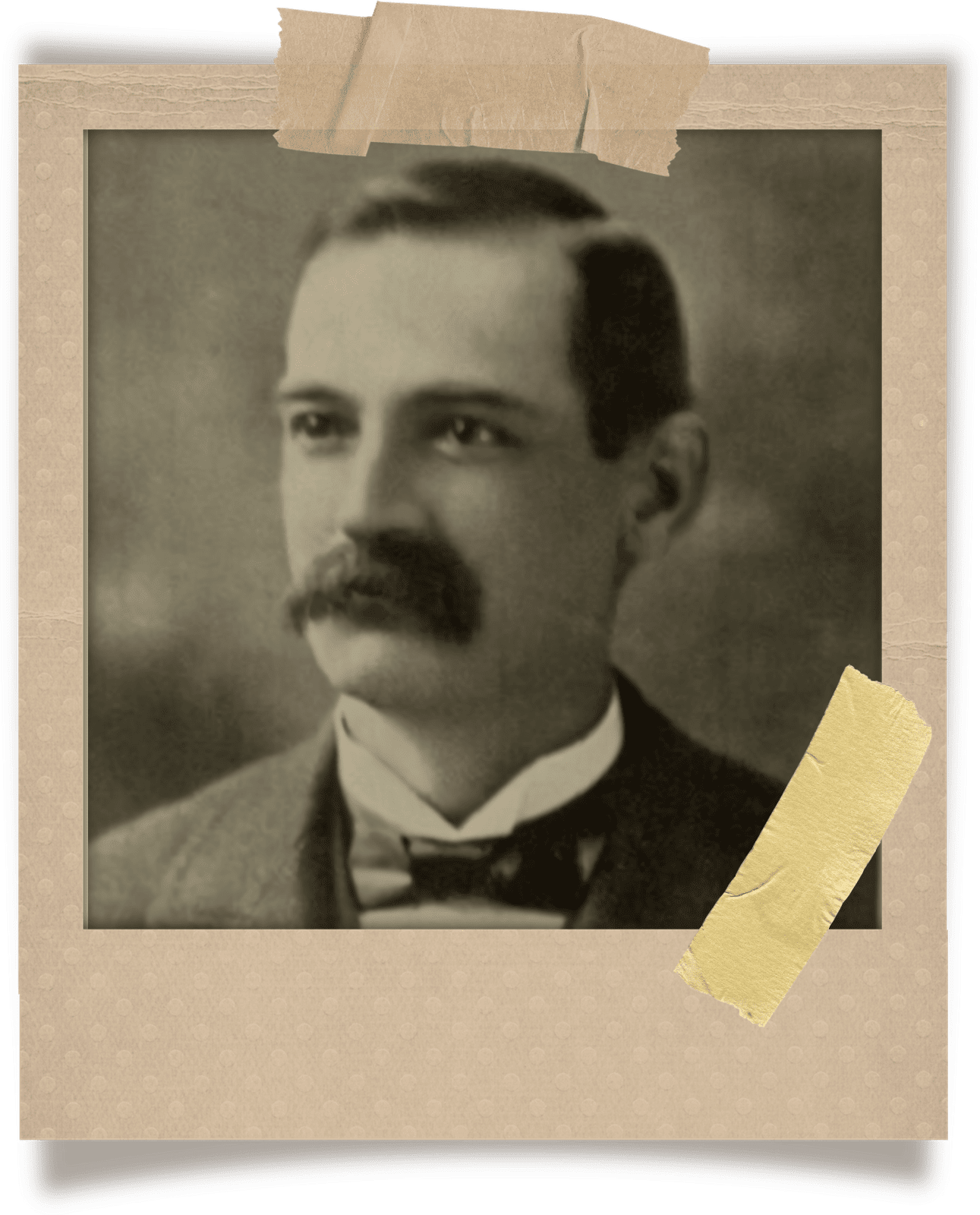
Fowler Incorporated
Otero County was formed in March of 1889 from eastern Pueblo County and western Bent County. The town of Fowler, Otero County, Colorado, was incorporated on October 3, 1900, with a population of 150. J. S. Gilbert was the first mayor, and lots were then selling for $20.00.
Quite probably, the first residential property in the vicinity of Fowler was that of Henry M. Fosdick. In 1882, the Fosdick family came from Boone, Colorado, and built a log cabin home on the south side of the Arkansas River. This cabin was replaced with a two-story home in 1894. Andrew J. Hollis maintained a postal service in a log cabin on the Fosdick property until 1887.
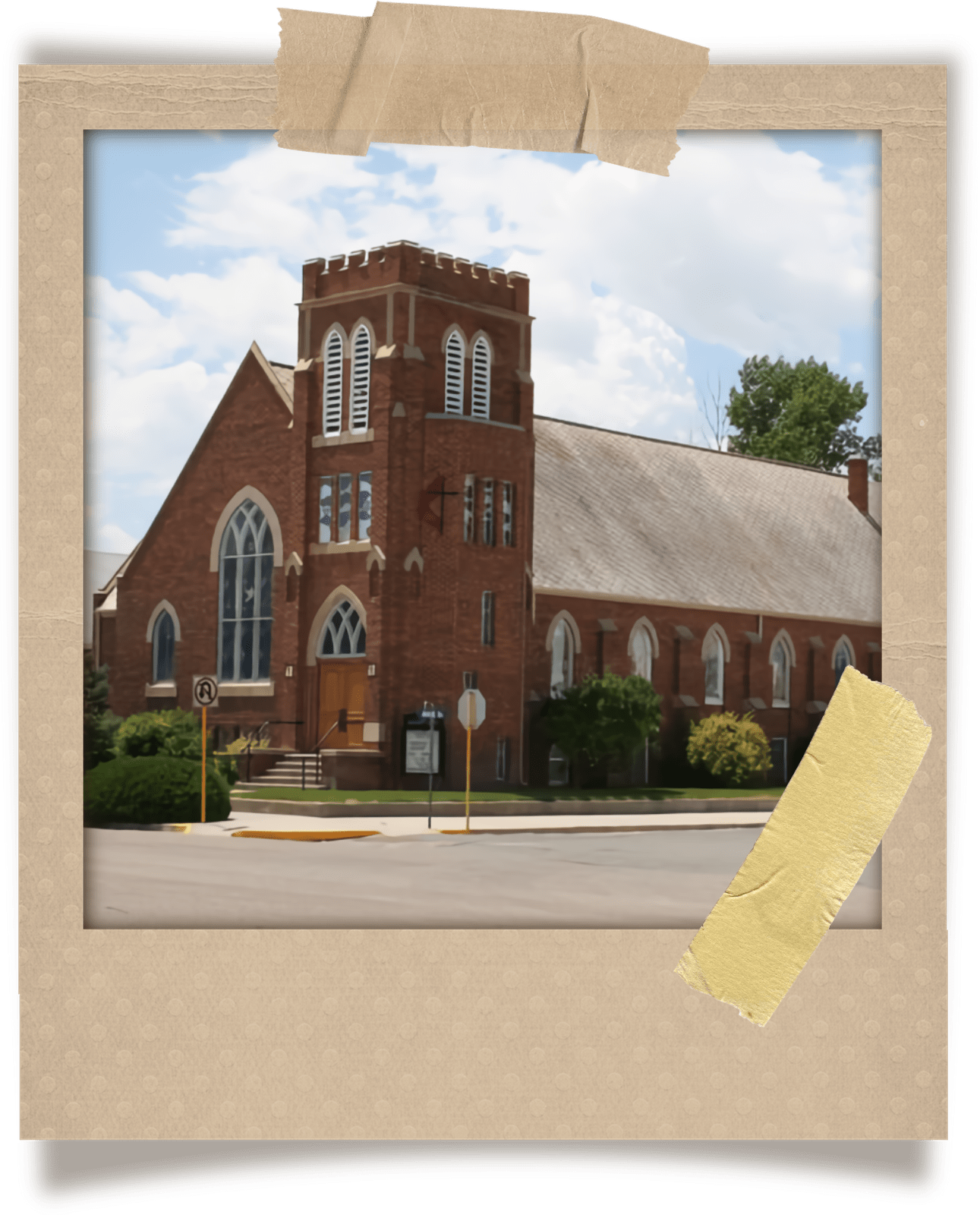
Businesses, Schools, Churches, And Newspaper
Businesses, schools, and churches flourished. There were three stores in Fowler in October of 1893: one at the Post Office (S. W. Denney, Postmaster), one owned by D. B. Lee, and one owned by H. McMaster.
The first furniture store was owned by Robert J. Hough on the southwest corner of Main Street and Cranston. In this same building, Mr. Hough served as an undertaker for a time. Before the Fowler Cemetery was opened in October 1897, burials were made in cemeteries at Nepesta and Rocky Ford. The cemetery was first owned by the Cemetery Association, but in 1920, it was turned over to the Town of Fowler.
The first lumber yard was a branch of the R. W. English Lumber Company of Rocky Ford, managed by Robert B. Edwards until his tragic death in 1929.
The first issue of the Fowler Tribune was published on September 17, 1897. Mr. George P. Davenport was the editor and proprietor. It was the first publication in this part of the valley and was printed in Denver. Although Fowler numbered only 28 people, the paper was well patronized, and within 1 year, the Tribune was being published in Fowler. Mr. C. W. Buck's first issue was on December 17, 1909.
The first school in the Fowler community was held in a small building near the slough, about a mile southeast of the center of town. In 1887, Miss Grace Fenlason taught 7 pupils.
